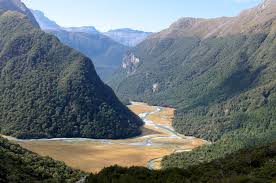 The debate over whether or not public money should be invested in the extension of Wellington International Airport’s (WIAL) runway is starting to heat up. Despite project studies only being released to the public this week, city councils across the region have already indicated they will provide financial support towards the $330 million cost. At present central government has said it will not support and some local body councillors are already starting to feel uneasy about the overall proposal.
The debate over whether or not public money should be invested in the extension of Wellington International Airport’s (WIAL) runway is starting to heat up. Despite project studies only being released to the public this week, city councils across the region have already indicated they will provide financial support towards the $330 million cost. At present central government has said it will not support and some local body councillors are already starting to feel uneasy about the overall proposal.
The Wellington City Council (minority shareholder in the airport), Wellington Chamber of Commerce and WIAL have been enthusiastically promoting the supposed “economic benefits” of the project. But the real reason the extension is needed is because the current length is sub-standard even for short-haul jet operations. WIAL is essentially asking taxpayers and ratepayers to co-fund capital works. Given that WIAL parent company Infratil earned a staggering $453 million last year and reportedly has a $1 billion war chest, why are public funds needed at all? Surely WIAL can make it’s own business case and access funding itself?
Adding 300 metres to the runway will not make it safe for wide-body aircraft. “Long haul” flights are not coming to Wellington any time soon and here’s why. Firstly, medium haul, mid sized airliners are actually being phased out across the Asia-Pacific region as we speak. My understanding is that the last Qantas 767 has already gone and Air NZ has a small number remaining with limited lifespans. Asian airlines no longer operate these types. Air Asia and Jetstar withdrew A330s from Christchurch and Auckland, because they could not make a profit. In any event, an A330 would not be able to operate fully laden, even from an extended runway. Truly “long haul” aircraft such as A380, A340 and B777 are unlikely to be operated because of weight and size limitations.
The 787 Dreamliner is often touted as the saviour of long thin air routes. Again, it will not be possible to economically operate this aircraft out of WLG, even with a longer runway. Extending the runway will not remove the nearby hills. Aircraft take-off restrictions are governed by the climb performance under instrument flight conditions with a failed engine at the takeoff point. Long haul operations (10-16 hours) require huge fuel loads and substantial take-off weights. Take-off performance is a function of aircraft weight, engine power and ambient conditions, NOT runway length. Aircraft will be payload limited even with the runway extension in place. This is a really important point that most commentators and the media have missed.
There are many other reasons why investing in a runway extension is a bad idea. Not the least of these is that the airlines refuse to commit. You can be sure that Air New Zealand is not going to undermine it’s cosy hub and spoke operation that is based in Auckland and it’s not clear that any Asia or U.S. based airlines are at all interested. Some passengers complain that travel via Auckland or Sydney is onerous. But can you name any city under 500,000 population in North America that has direct air links with London or Hong Kong? Hub and spoke operations are the norm elsewhere in the world. There are many other investments that Wellington can make as a city and a region in order to promote economic development.
Unsurprisingly, there is zero information on the WCC or WIAL websites about the public consultation process. But the media are reporting the following information. There will be three public open days where people can meet one-on-one with the experts who prepared the reports. The open days will be held at Chaffers Dock Function Centre on December 2 from 12pm to 3pm, at SPCA Fever Hospital in Mt Victoria on December 3 from 5pm to 8pm, and at the Brentwood Hotel Conference Centre in Kilbirnie on December 5 from 12pm to 3pm.
Postscript: There is now a dedicated website providing links to information from the consultants who were paid by the project supporters to provide reports. The site also contains information about public presentations and how to make a submission.
Paul Spence is an ardent supporter of regional economic development, a commercial pilot licence holder and a technology sector company director based in Wellington.


 Our Prime Minister laid bare his regional biases when he
Our Prime Minister laid bare his regional biases when he 
 Bernard Hickey’s curious
Bernard Hickey’s curious  Railways, coal mining and industrial scale manufacturing were all economic activities that had their origins in the 19th Century. This week has not been a good one for anyone employed in those businesses in New Zealand, with
Railways, coal mining and industrial scale manufacturing were all economic activities that had their origins in the 19th Century. This week has not been a good one for anyone employed in those businesses in New Zealand, with 